4.37″ rainfall so far in August.
2.49″ average rainfall, month to date.
74 F. high yesterday in the Twin Cities.
81 F. average high on August 17.
86 F. high on August 17, 2016.
August 18, 1953: Four heifers near St. Martin were lucky; a tornado picked them up and set them back down again, unharmed.
Wednesday was a poignant, vaguely terrifying reminder that we live in the Super Bowl of Weather. In mere seconds the sky can turn on you. And if you’re not paying attention you can get into serious trouble.
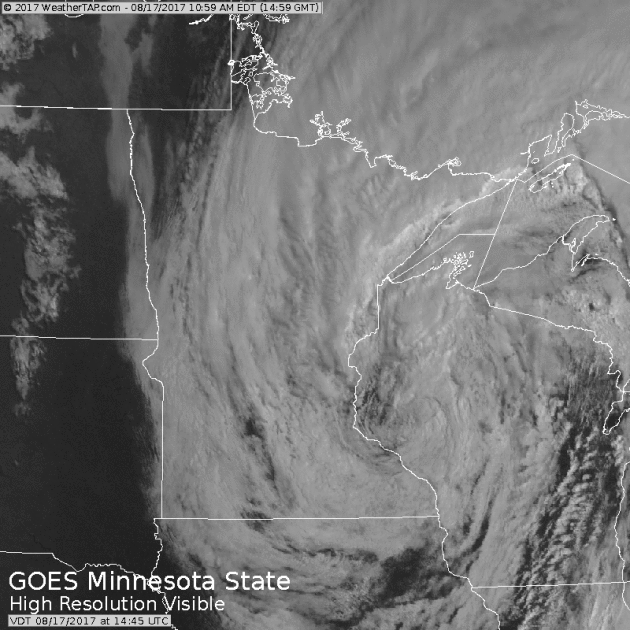
Rainfall As of Early Thursday. Check out this link from NOAA for the latest amounts:
Public Information Statement National Weather Service Twin Cities/Chanhassen MN 732 AM CDT Thu Aug 17 2017 ...24 Hour Rainfall Reports... Location Amount Time/Date Provider Redwood Falls AP 9.45 in 0653 AM 08/17 ASOS Redwood Falls 8.12 in 0630 AM 08/17 COOP Morton 6.82 in 0630 AM 08/17 GOES Beaver Falls 6.47 in 0645 AM 08/17 GOES Maynard 6.07 in 0645 AM 08/17 GOES Bird Island 7SSE 5.88 in 0630 AM 08/17 COCORAHS Searles 5SE 5.54 in 0722 AM 08/17 CWOP Granite Falls 5.26 in 0645 AM 08/17 UCOOP Lucan 4.58 in 0544 AM 08/17 COCORAHS Hanley Falls 4.57 in 0645 AM 08/17 GOES Hanley Falls 4.28 in 0645 AM 08/17 GOES Willmar 5N 4.11 in 0600 AM 08/17 COOP Redwood Falls 3.97 in 0630 AM 08/17 GOES Montevideo 3.91 in 0700 AM 08/17 COCORAHS Lake Lillian 5SE 3.85 in 0645 AM 08/17 COCORAHS Montevideo 1S 3.78 in 0710 AM 08/17 CWOP Montevideo 2SW 3.61 in 0700 AM 08/17 USARMY-COE Montevideo 1SW 3.57 in 0700 AM 08/17 COOP Willmar 2ENE 3.43 in 0713 AM 08/17 CWOP New Ulm 3SE 3.33 in 0423 AM 08/17 COOP New Ulm 3.30 in 0500 AM 08/17 COCORAHS Cosmos 1E 3.15 in 0630 AM 08/17 GOES Providence 3.04 in 0630 AM 08/17 GOES Springfield 1NW 2.94 in 0710 AM 08/17 CWOP St. Martin 1NW 2.92 in 0700 AM 08/17 HADS Stockholm 1S 2.83 in 0615 AM 08/17 USARMY-COE Coon Rapids 2ESE 2.82 in 0710 AM 08/17 CWOP New Prague 1ESE 2.80 in 0907 PM 08/16 COCORAHS Boyd 5SW 2.80 in 0700 AM 08/17 COCORAHS Eden Prairie 2WSW 2.79 in 0700 AM 08/17 COCORAHS Litchfield 3S 2.74 in 0711 AM 08/17 RAWS Brooten 3NNE 2.71 in 0615 AM 08/17 HADS Dawson 2.65 in 0630 AM 08/17 GOES Chanhassen (NWS) 2.62 in 0700 AM 08/17 COOP Brownton 2.60 in 0630 AM 08/17 GOES Long Lake 1NW 2.56 in 0600 AM 08/17 COCORAHS Springfield 2.52 in 0630 AM 08/17 GOES Long Prairie 2.51 in 0600 AM 08/17 COOP Burnsville 3ENE 2.51 in 0620 AM 08/17 COCORAHS Laq Qui Parle Dam 2.50 in 0700 AM 08/17 GOES Little Falls 2SSE 2.47 in 0707 AM 08/17 RAWS Milan 5E 2.31 in 0645 AM 08/17 USARMY-COE Hutchinson 5N 2.29 in 0645 AM 08/17 COCORAHS Burnsville 3SSW 2.24 in 0640 AM 08/17 COCORAHS Frontenac 2.22 in 0645 AM 08/17 UCOOP Prior Lake 2WSW 2.19 in 0716 AM 08/17 CWOP Manannah 2.17 in 0630 AM 08/17 GOES Randall 2.14 in 0701 AM 08/17 CWOP Jordan 2.14 in 0645 AM 08/17 GOES Benson 2.13 in 0645 AM 08/17 GOES Eden Prairie 3ESE 2.12 in 0710 AM 08/17 CWOP Golden Valley 2.10 in 0555 AM 08/17 COCORAHS Lake City 2NW 2.08 in 0718 AM 08/17 CWOP Lake Minnetonka 1WSW 2.08 in 0500 AM 08/17 COCORAHS Chaska 1ESE 2.07 in 0655 AM 08/17 COCORAHS Sobieski 3E 2.07 in 0700 AM 08/17 HADS Shakopee 1NW 2.06 in 0717 AM 08/17 CWOP

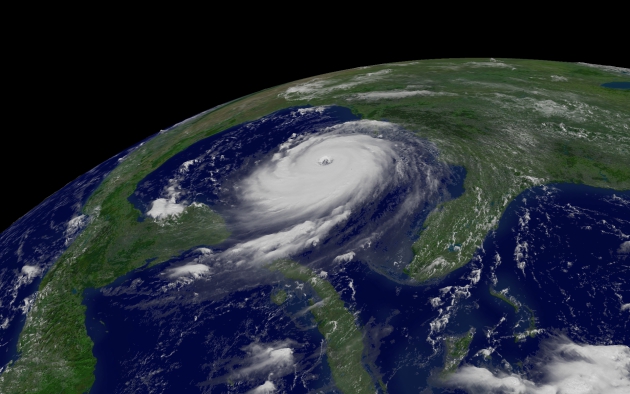
Lessons From the Storm: Effects of Extreme Weather Linger More Among Children and Older Adults. A story at New Orlean’s NOLA.com was an eye-opener: “…The elderly and children are among the most vulnerable populations to extreme weather events. That’s in part because they often do not have the ability to mobilize quickly or on their own, and they’re at a greater risk physiologically and psychologically. These trends were noticeable in the aftermath of Hurricane Katrina. Consider these key findings from several studies:
- Seventy-four percent of the deaths related to Hurricane Katrina were among those age 60 and older, and 50 percent of these were among people over age 75, according to a 2006 study.
- In the year after Hurricane Katrina, displaced students in Louisiana public schools, on average, performed worse in all subjects and grades compared with other students. In addition, displaced students experienced a variety of problems related to attendance, academic performance, behavior and mental health, according to a 2010 report...”
Monday Eclipse – What Can Possibly Go Wrong? Here is NOAA’s official cloud cover forecast for 1 PM Monday; the best chance of cloudiness over the Upper Mississippi Valley, Southeast and southern Rockies. Click here to dial up the very latest cloud outlook.
What Happens to the Grid When Solar Power Goes Dark During the Eclipse. A story at Philly.com answers many of our questions: “…Across the country, solar generators now account for more than 42,000 megawatts of power, up from 5 MW in 2000. Solar power still accounts for just a small percentage of total electric generation, but Monday’s eclipse will serve as a reminder of the need for a diversity of energy sources, to fill in when intermittent power producers take a holiday. Unlike a storm or an unplanned power-plant outage, the arrival time of an eclipse is well-known — one occurs when the moon is perfectly aligned to block out the sun — and the effect can be reasonably forecast, depending on cloud conditions. So grid operators are confident they can manage the window when the sun will go into hiding and then reemerge. But they hope to glean other insights during the episode…”
The Worst Things That Could Go Wrong During the Total Solar Eclipse – And How to Be Prepared. The Washington Post reports; at the top of the list: “…Looking directly at the sun during the eclipse without proper eyewear would harm your eyes “like a magnifying glass on a leaf,” as one optometrist put it to The Washington Post’s Angela Fritz. Fritz reports: “Depending on the sky conditions, it only takes about a minute and a half for your eyes to be permanently damaged, and the damage is cumulative, meaning you don’t have to stare at the sun without looking away for it to be harmful — you may just be taking quick glances, but it’s still damaging your eye.” We are going to keep saying this, and saying this, and saying this: If you plan on viewing the eclipse, you will need to wear protective glasses. Regular sunglasses won’t do…”
Image credit: “Capital Weather Gang’s Angela Fritz explains what could happen to your eyes if you were to watch the Aug. 21 eclipse without special sunglasses and how to spot the ones that work.” (Claritza Jimenez, Daron Taylor, Angela Fritz/The Washington Post)
Twin Cities Solar Eclipse: Path, Time, Duration and Weather. Here’s an excerpt from Patch.com: “The total phase of this solar eclipse will not be visible in Minnesota, but it can be observed here as a partial solar eclipse, according to timeanddate.com. The Moon will cover a large portion of the Sun, and it will be an amazing sight regardless.
Here’s when it will happen in the Twin Cities:
- Starts: Aug. 21 at 11:43 a.m.
- Maximum point in Minneapolis: Aug. 21 at 1:06 p.m.
- Ends: Aug. 21, 2017 at 2:29 p.m.
NASA will have live video from several cities around the United States. For a more specific timeline for your own neighborhood, check out Vox’s handy search tool by zip code...”
What It Takes to Chase the Total Eclipse From Coast to Coast. CNET.com provides interesting perspective: “…According to Xavier Jubier’s very useful total eclipse map, the shadow will be moving fastest when it hits the coast of Oregon in the morning at a speed of over 2,400 miles per hour (3,862 km/h). At that velocity, your only hope of keeping up with the eclipse would be a flight in one of world’s fastest fighter jets. Because of the geometry of the Earth’s surface, the eclipse shadow moves faster at the start and end of its path and at its slowest in the middle. That means that near the point of greatest eclipse in Kentucky, it will “slow down” to a mere 1,448 mph (2,330 km/h), which is just a little bit faster than the top speed of the commercial Concorde jet...”
Photo credit: “A Concorde jet like this one once chased a solar eclipse for over an hour in 1973.” Stephen Shankland/CNET.
Farmer’s Almanac Outlook for Winter of 2018. Suspend your disbelief; let’s light a candle and look out 4-8 months into the future! Good luck with that. Hey, I like to check out the winter outlook as much as anyone else, but please don’t refer to this as a forecast or even a trend. There’s no peer-reviewed science explaining the methodology involved, and the track record isn’t particularly good. But it’s fun to look at. Kind of like fantasy football – for weather: Here’s an excerpt of a summary from Farmers’ Almanac: “…Cold conditions are back! According to the Farmers’ Almanac’s 200-year-old formula, this winter is expected to be a bit more “normal” as far as the temperatures are concerned, especially in the eastern and central parts of the country–chiefly those areas to the east of the Rocky Mountains–with many locations experiencing above-normal precipitation…Break out the space heaters, umbrellas, and warm socks, because the Southeast will see below normal winter temperatures with an unseasonable chill reaching as far south as the Gulf Coast, with above-average precipitation. From the Great Lakes into the Northeast, snowier-than-normal conditions are expected. We can hear the skiers, boarders, and snowmobilers cheering from here!...”
Does Rain Increase Joint Pain? Researchers Say No. NBC News takes a look at new research: “…The most widely accepted theory by medical professionals is that changes in barometric pressure also known as the weight of the air, can cause expansion and contraction of tendons, muscles, and bones, resulting in joint pain. Low temperatures, which may also increase the thickness of joint fluids, can also contribute to the pain that many experience. Still, the association between rainy or damp conditions and joint pain has not generated conclusive results. “I think science supports these theories, but the research has been conflicting,” says NBC News medical contributor and rheumatologist, Dr. Natalie Azar. “There have been a fair number of studies that have looked at this but the results have been inconsistent…”
There’s Plague in Arizona. Authorities Warn of Fleas That Can Infect People and Pets. The Washington Post has more details: “Public health officials in two Arizona counties are warning residents about the discovery of plague bacteria, an endemic concern among those who live in the American Southwest but unsettling, nonetheless, given the disease’s devastating impact on human history. Navajo and Coconino counties are adjacent to one another, and in each community the findings are identical: Fleas carrying Yersinia pestis, the bacterium that causes plague, were discovered this month and pose a potentially grave threat to people and their pets, especially cats…”
Graphic credit: “People and pets bitten by fleas from dead animals are at risk for contracting plague, health officials say. Cats can become very ill and directly infect humans by coughing infectious droplets into the air. Dogs are less likely to get sick, but they can carry fleas into the home.” (U.S. Centers for Disease Control and Prevention).
We Saved the Ozone. Here’s How We Can Save Everything Else. GOOD describes international efforts to ban harmful chemicals. The climate challenge is much more daunting, since it requires a reduction in the fossil fuels that still largely power the world: “…In the ’80s, climate scientists realized CFCs and HCFCs – heat-catching chemicals most commonly used as refrigerator coolants – were tearing holes in our planet’s atmosphere. The Montreal Protocol drew upon this evidence to enact laws that would have global repercussions, but it wasn’t until this latest study the rest of us learned about the benefits the United States has since incurred. Head researcher and study writer Lei Hu used the National Oceanic Atmospheric Administration’s atmospheric monitoring network to determine that eliminating these pollutants had the same effect as cutting carbon dioxide emissions by 170 million tons each year from 2008 to 2014. Hu and her team further estimated that maintaining the Montreal Protocol could help the U.S. cut an additional 500 million tons of CO2 by 2025 – that’s about a quarter of the emissions we need to cut in order to fulfill the Paris climate agreement, Gizmodo reports...”
Hyundai Unveils New Fuel Cell SUV With Longer Travel Range. A viable alternative to electrical vehicles? Here’s a clip from The Washington Post: “Hyundai Motor said Thursday it plans to launch early next year a second-generation hydrogen fuel cell vehicle that will travel more than 580 kilometers (360 miles) between fill-ups under Korean standards. If delivered as promised, the new fuel cell vehicle will travel 40 percent farther than its first generation fuel cell SUV, the Tucson ix FCEV, launched in 2013. Under European standards, Hyundai said the new vehicle can drive 800 kilometers (498 miles). Fuel cell cars, emission-free like pure electric cars, can be refueled in two to three minutes unlike electric vehicles that can take several hours to fully recharge. But the dearth of hydrogen fueling stations is an obstacle for mass adoption…”
Photo credit: “Hyundai Motors’ new hydrogen fuel cell vehicle is displayed during a media preview in Seoul, South Korea, Thursday, Aug. 17, 2017. Hyundai Motor says its new hydrogen fuel cell vehicle will travel more than 580 kilometers (360 miles) between fill-ups.” (Lee Jin-man/Associated Press).
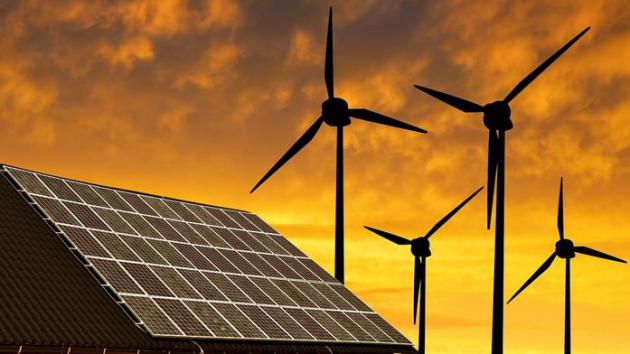
On The Climb to Renewable Energy, Solar and Wind Prices Tumble. Things are moving in the right direction – we just need to move faster. Here’s a clip from GreenBiz: “…At a time when so little is getting done in Washington — and what little movement there has been, has been in the wrong direction — it’s heartening to see how much has been accomplished, primarily as the result of efforts by other actors. In its report “Renewables on the Rise” (PDF), the group states, “Clean energy is sweeping across America and is poised for further dramatic growth in the years ahead.” Here are some highlights:
- America produced almost eight times as much electricity from sun and wind as we did in 2007, and those two sources combined to produce 10 percent of the nation’s total for the first time in March.
- At the same time, the country is using nearly 10 percent less energy per capita than a decade ago. Nearly all of that decline was in fossil fuels: In 2007, fossil fuel consumption (PDF) was 85.927 quads, compared to 2016 when it was 78.569.
- Breaking it down further, solar produced 43 times more power than 10 years ago, while wind produced seven times as much...”
Image credit: Shutterstock.
Is There a Return on Investment With Wind and Solar? All energy sources receive subsidies, one question: what is the health-related ROI of clean energy for consumers? Here’s an excerpt from Quartz: “One of the biggest criticisms of the renewable-energy industry is that it has been propped up by government subsidies. There is no doubt that without government help, it would have been much harder for the nascent technology to mature. But what’s more important is whether there has been a decent return on taxpayers’ investment. A new analysis in Nature Energy gives renewable-energy subsidies the thumbs-up. Dev Millstein of Lawerence Berkeley National Laboratory and his colleagues find that the fossil fuels not burnt because of wind and solar energy helped avoid between 3,000 and 12,7000 premature deaths in the US between 2007 and 2015. Fossil fuels produce large amounts of pollutants like carbon dioxide, sulfur dioxide, nitrogen oxides, and particulate matter, which are responsible for ill-health and negative climate effects…”
Photo credit: “Glittering future.” (Reuters/Carlos Barria)
From “Selfies” to “Bothies”. I’m an Apple fanboy, but I have to admit this is very cool, and may take citizen journalism to the next level. Here are a couple excerpts from The Guardian: “Nokia has launched the most important new handset in its attempts to revitalise the once world-beating brand for the modern smartphone era dominated by Samsung, Apple and China’s Huawei….The company is pushing what it calls the “bothie” as the next evolution of the selfie, using Nokia’s Dual Sight technology to fire up both the rear and front-facing cameras at the same time, shooting video or photos of a subject and the smartphone operator simultaneously, which can be shared live directly to Facebook or YouTube…”
Image credit: “The ‘bothie’ Dual Sight function on the new Nokia 8.” Photograph: John Nguyen/Press Association.
End of the Checkout Line: The Looming Crisis for American Cashiers. The Guardian has details on disruption now underway: “…A recent analysis by Cornerstone Capital Group suggests that 7.5 million retail jobs – the most common type of job in the country – are at “high risk of computerization”, with the 3.5 million cashiers likely to be particularly hard hit. Another report, by McKinsey, suggests that a new generation of high tech grocery stores that automatically charge customers for the goods they take – no check-out required – and use robots for inventory and stocking could reduce the number of labor hours needed by nearly two-thirds. It all translates into millions of Americans’ jobs under threat...”
Photo credit: “A cashier, left, checks out items as a customer shops during the grand opening of the Whole Foods supermarket in Newark, New Jersey.” Photograph: Julio Cortez/AP.
The Case Against Free Speech for Fascists. Quartz has food for thought; here’s a clip: “…Free speech absolutism is a faith. Though people marshal pragmatic arguments on its behalf, the real argument is a moral one. The ACLU and Greenwald are committed to free speech for all because free speech is their most important ideal—it is the good thing from which equality, freedom, and all other good things flow. For people who see themselves as anti-racists and anti-fascists first, however, the insistence that free speech will save us all rings somewhat hollow after this weekend. Given limited energy and resources, maybe defending the rights of violent bigots isn’t the noble choice in every case—especially when those bigots predictably use their platform to silence others. Free speech absolutists insist that free speech is the foundation of anti-fascism. But maybe anti-fascism is the basis of true free speech—in which case, defending the speech of bigots can, at least in some cases, leave us all less free.”
Photo credit: Alejandro Alvarez/News2Share via Reuters.
Birthday Thoughts From My 87-Year Old Father. My dad grew up in Germany as WWII was coming to an inglorious, devastating end. As such he had a few thoughts for my WCCO Radio co-host, Jordana Green. Thanks Dad, and happy birthday.
HBO’s “Game of Thrones” Is Blessing and Curse for Croatia. Here are a couple of excerpts from Quartz: “Like the Targaryen’s dragons, Game of Thrones tourism has grown into a beast that’s become increasingly hard to control—just ask the people of Dubrovnik. The insanely popular franchise is turbo boosting Croatia’s economy overall through tourism. But now the country’s Southern city is having to make more cutbacks to tourist numbers in a bid to prevent the overcrowding, which has become more and more problematic in recent years. Dubrovnik mayor, Mato Franković, plans to cap the number of visitors scaling the city’s Medieval walls at 4,000 a day—just half of the number suggested by Unesco, which granted the Old City World Heritage Site status in 1979...”
Image credit: “Dubrovnik as King’s Landing.” HBO.
2017’s Best and Worst States to Grow Old. A story at caring.com caught my (aging) eye: “…Seniors need to consider everything from affordability to quality healthcare access, long-term care options, a variety of senior care services, and overall quality of life. Based on a comprehensive study incorporating senior living community reviews, nursing home costs, elderly well-being assessments and more, Caring.com has assembled its annual list of states that offer the best – and worst — mixture of senior services, affordability, and overall quality of care for seniors. Unlike many roundups of “best places” for seniors to live, our survey was designed to capture the factors that make a state a healthy, affordable environment for the elderly...”
Map credit: Highcharts.com.
What Kind of Father Lets His Son Play Football? This story at GQ.com struck a nerve, because I did let my two sons play football. That was before all the stories came out about CTE and brain injuries, not just NFL and college players but high school leagues. I really struggle with this because, like so many others, I LOVE football. But when it comes to your own kids is the risk too great? “There’s no longer any avoiding the question. We all know now just how dangerous the game can be. So, do you let your kid risk it all—his health, his brain—just because he wants to play? One dad explains the excruciating call he made. am on the phone with the writer Malcolm Gladwell, the number one voice in American culture advocating for The End of Football. We’ve just dissected the game’s risks and liabilities and the dangers of repeated head trauma when I ask him this: “What would you say to me if I told you I was gonna let my son play football?” A pause. “Well, I’d never tell any parent what they should or shouldn’t do…,” Malcolm politely, Canadianly, stammered. “It’s okay,” I say, “really. Just tell me what you think.” “I’d say I think you’re crazy…”
Photo credit: Cait Oppermann.
People Age Better If They Have a Purpose In Life. TIME.com explains: “Having a purpose in life may help people maintain their function and independence as they age, according to a new study published in JAMA Psychiatry. People in the study who reported having goals and a sense of meaning were less likely to have weak grip strength and slow walking speeds: two signs of declining physical ability and risk factors for disability. Purposeful living has already been linked to other aspects of wellbeing, like a longer life, lower risk of disease, better sleep and healthier behaviors. But this study is among the first to examine its connection with physical functioning. That’s an important measure, say the authors, especially as the number of senior citizens in the U.S. grows rapidly. Almost 1 in 3 Americans ages 65 and older says they have difficulty walking three city blocks, according to the CDC…”
Photo credit: Bethan Mooney for TIME.
Coke vs. Pepsi. Brand Choices Put Strains on Relationships. Really? I read this article at Indy100 and did a double-take: “…The researchers found that partners who had low power in their relationships (who couldn’t shape their partner’s behaviour) usually submit to the others’ preferred brands. Former Fuqua PhD student Danielle Brick, now of the University of New Hampshire, said:
If you are lower in relationship power and have different brand preferences than your partner, you’re probably going to find yourself stuck with your partner’s favourite brands, over and over again.
This could lead to a death-by-a-thousand-cuts feeling.
Most couples won’t break up over brand incompatibility, but it leads to the low power partner becoming less and less happy.
The researchers used brand preferences in soda, coffee, beer, chocolate, and cars to study individuals and couples over the course of two years. They found the results aligned with findings about relationship power and happiness, and although not seen as important conventionally, could weigh down a relationship. Brick said..”
The Eclipse Conspiracy. What, pray tell, does THIS remind you of? Something just doesn’t add up. Those astronomers are only in it for the big, fat government grants! There may just be two sides to this story. Follow the money, argues James Hamblin, tongue planted firmly in cheek, over at The Atlantic: “…Meanwhile the scientists tell us we can’t look at it without special glasses because “looking directly at the sun is unsafe.” That is, of course, unless we wear glasses that are on a list issued by these very same scientists. Meanwhile, corporations like Amazon are profiting from the sale of these eclipse glasses. Is anyone asking how many of these astronomers also, conveniently, belong to Amazon Prime? Let’s follow the money a little further. Hotels along the “path of totality”—a region drawn up by Obama-era NASA scientists—have been sold out for months. Some of those hotels are owned and operated by large multinational corporations. Where else do these hotels have locations? You guessed it: Washington, D.C...”
Image credit: Yannis Behrakis / Reuters.
Who Needs “Books” When You Can Gaze Up At Statues? Check out this Twitter thread.
TODAY: Patchy clouds. few showers, possible T-storm. Winds: SW 5-10. High: 76
FRIDAY NIGHT: Showers taper. Low: 61
SATURDAY: Partly sunny and pleasant. Winds: SW 5-10. High: 81
SUNDAY: Warm sun, feels like August again! Winds: SW 8-13. Wake-up: 66. High: 86
MONDAY: Few showers and T-storms. Touch and go for seeing eclipse. Winds: S 10-15. Wake-up: 68. High: 82
TUESDAY: Wet start, then gradual clearing. Winds: N 10-15. Wake-up: 66. High: 80
WEDNESDAY: Mix of clouds and sun, comfortable. Winds: NW 7-12. Wake-up: 62. High: 77
THURSDAY: Cool sun for Day 1 of State Fair! Winds: NE 7-12. Wake-up: 58. High: 74
Climate Stories…
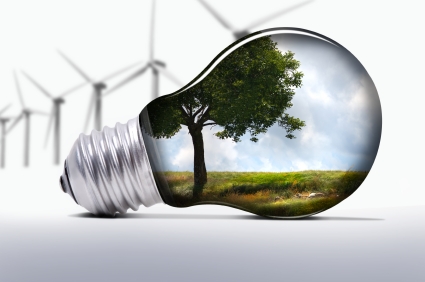
The Republicans Trying to Fight Climate Denial in Their Own Party. VICE has the story: “…The idea would to reduce carbon dioxide emissions without using regulations regulation. It has already gotten a handful of major corporate and activist players on board, like ExxonMobil, Shell, Conservation International, and the Nature Conservancy. Ted Halstead, the CLC’s chairman and CEO told me the group’s free market-based plan compared to Democrats’ is “better in every sense—better for the environment, better for business, better for households, and better for bridging the partisan divide.” He believes “what has been lacking for so long is a solution that actually speaks to the interest of the Republican Party. The simplistic view is that Republicans are not in favor of climate progress where Democrats are; I think that’s not correct. I think that boils down to confusion between means and ends. So, when you get to the ‘ends’ of policy, conservatives would agree with Democrats that we need to protect our climate for our children and grandchildren…”
How Can We Convince Climate Deniers That Climate Change is Real? Whatever you do, don’t call them stupid. Interesting perspective from Project Earth: “The environmental economist Cameron Hepburn said that if someone wanted to design a pill that would put an end to humanity, it would look a lot like climate change. Not only is climate change the world’s largest collective action problem—with any viable solution requiring coordinated action by international players—but its effects are also spread far across space and time, making it very difficult for humans to conceptualize the problem in the first place (the world doesn’t feel like it’s warming, so we have to rely on scientists to tell us that it is). Making matters even more confusing is the trillion-dollar fossil fuel industry that has fought tooth and nail to persuade the public that climate change is a myth...”
Photo credit: “Thousands of protestors gather in Denver Civic Center Park at the People’s Climate March on Denver on April 29, 2017 in Denver, Colorado.” Credit: Marc Piscotty / Stringer.
Does Climate Change Cause Extreme Weather Events? A warmer climate correlates with hotter heat waves, more intense rainfall and deeper, more severe drought – but a causal connection with other forms of extreme weather isn’t always possible. Here’s an excerpt from Smithsonian.com: “…Thanks to advances in supercomputing and pooling hundreds of climate models developed by researchers across the world, they are also more statistically confident than ever in saying that intense storms, droughts and record-breaking heat waves are occurring with increased frequency because of humans. “Ten years ago we wouldn’t have been able to do so,” says Ken Kunkel, a climate scientist at North Carolina State University who also works with the National Oceanic and Atmospheric Administration. But teasing apart individual weather events is harder. The planet’s history is dotted with unexpected, prolonged heat waves and sudden damaging storms far before humans began pumping out greenhouse gases. “The big challenge is that these kind of extreme events have always happened,” says Kunkel, whose work focuses on heavy storms that cause considerable damage in the U.S. But, he says, “Can you say, ‘This event was caused by global warming? No…’”
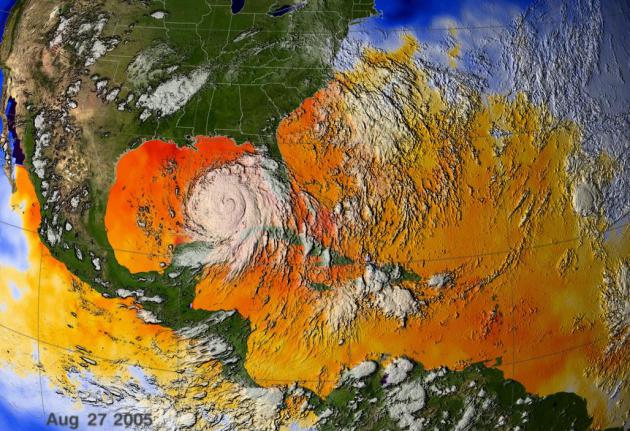
Trump Has Broad Power to Block Climate Change Report. ProPublica has details: “…In many ways, the 669-page “Climate Science Special Report” is utterly unremarkable. It is a review of existing science that concludes human activities are largely responsible for the warming of the planet. Worsening climatic and coastal impacts are almost inevitable unless the world’s industrial nations significantly reduce emissions of greenhouse gases. Its contents came as no surprise to foes or supporters of polices aimed at cutting climate-warming emissions. Earlier drafts, with the same basic conclusions as those in the submitted document, had been publicly posted and in wide review since January. What makes the report significant now is the challenge it poses to a White House that has been moving aggressively to reverse the Obama administration’s policies and rules on climate change. So far, the Trump administration has begun withdrawing the U.S. from the 2015 Paris Agreement, cut relevant environmental agency budgets and removed from some government websites language describing the risks of unabated global warming...”

